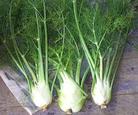|
Ozark Green Thumb BCMG Monthly e-Newsletter |
|
|
 The best garden plants are easy to grow and satisfy specific needs; plus, they look good. Fennel (Foeniculum vulgare) is one of the best garden plants because it is attractive, easy to grow and satisfies lots of very specific needs. You can eat it, it is a good weaver plant in the perennial border and it hosts the caterpillars of the eastern black swallowtail. Fennel is an upright-growing perennial herb of the carrot family growing to 6 feet tall, which produces a number of hollow stems from a deep, taprooted crown. Its leaves are finely dissected to 16 inches long and terminate in threadlike filaments. The most common form, the bronze fennel (variety Purpureum), has maroon/bronze leaves, which give the plant a smoky-like look. All parts of the plant have a licorice-like scent when crushed. Florence fennel of the Azoricum Group grows only 3 feet tall and produces a cluster of swollen leaf bases that form a bulb-like swelling at the base of the leaf. This fennel is grown as an annual crop, with the “bulbs” harvested while succulent and sweet. This is eaten as a cooked vegetable and is often found in U.S. markets under its Italian name, finocchio. Yellow flower clusters in flat-topped umbels to 3 inches across appear in midsummer near the ends of the stems. Individual flowers are tiny and give rise to a single “seed,” which has culinary uses. Fennel is a Mediterranean plant that is now found naturalized throughout the world, especially in areas such as California, which has a similar climate. Its leaves are used as a flavoring similar to dill weed when cooking fish, and as an ingredient in stuffing recipes. Its seeds are a favorite in Italian cooking. In garden design, fennel is an excellent addition to the vegetable garden or the mixed perennial border. Though it can reach considerable height, its deep taproot and finely dissected leaves make it a good neighbor, and other plants can grow next to it without being crowded out. Plants are hardy from zones 5 through 9, making it one of the most cold-hardy members of this genus. Fennel is a must-have plant if the aim is to attract butterflies into the garden for it. Along with carrot, dill, parsley and Queen Anne’s lace, fennel is a preferred food plant for the caterpillars of the eastern black swallowtail. The caterpillars are two inches long, with concentric rings of black and yellow. They are voracious feeders and can strip young plants of most of their foliage, but fennel is tough enough — it responds by sending out a fresh supply of leaves.
Fennel requires sunny, well-drained soils but seems to tolerate both alkaline and acidic sites. It has good drought tolerance late in the year, but needs moisture during establishment to ensure the formation of a strong root system. Once established, fennel can be long-lived in the garden. Plants are semi-evergreen and serve as sites for overwintering eggs of the swallowtail butterfly. By: Gerald Klingaman, retired Retired Extension Horticulturist - Ornamentals Extension News - September 16, 2011
0 Comments
Leave a Reply. |
Archives
April 2022
|
|
